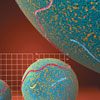Tag Archives: HDL cholesterol

August 2012 Br J Cardiol 2012;19:104–06 doi:10.5837/bjc.2012.022
The future of CETP inhibition – still to be REVEALed
Jonathan Morrell

Reducing the residual cardiovascular risk that remains after statin use is a frontline challenge for preventive cardiology. After attention to other modifiable risk factors, further reduction of low-density lipoprotein cholesterol (LDL-C) levels and increasing high-density lipoprotein cholesterol (HDL-C) levels are under particular scrutiny.1,2 The cardioprotective epidemiology of HDL-C is strong and well known, and so it often comes as a shock to health professionals that there is no direct proof that raising HDL-C improves cardiovascular outcomes. Despite this, raising HDL-C remains an attractive potential approach for tackling residual ris
March 2012 Br J Cardiol 2012;19(Suppl 1):s1-s16
Lipids and CVD: improving practice and clinical outcome

This supplement is a report from the inaugural meeting of the Cardiometabolic Forum, jointly organised by the British Journal of Cardiology and HEART UK – The Cholesterol Charity. The meeting was held at the Royal Pharmaceutical Society, London, on 24th November 2011. Meeting chairs were Dr Dermot Neely (Royal Victoria Infirmary, Newcastle upon Tyne) for HEART UK, and Dr Henry Purcell (Royal Brompton Hospital, London, and Editor) for BJC. We hope this supplement will provide readers with an independent overview on recent developments in our knowledge of cholesterol metabolism and its implications for clinical practice. Speakers Dermot Neely

March 2012 Br J Cardiol 2012;19(Suppl 1):s1-s16 doi:10.5837/bjc.2012.s01
Lipids and cardiovascular disease: re-thinking targets
Kausik K Ray

Worldwide, cardiovascular disease remains the leading cause of death and a major cause of disability affecting quality of life.1 Elevated cholesterol is one of the key risk factors accounting for a substantial proportion of this disease burden. In developed countries, at least one-third of all cardiovascular disease is attributable to five risk factors: smoking, excessive alcohol intake, elevated blood pressure, elevated cholesterol and obesity.2 In particular, elevated cholesterol accounted for 56% of all cases of coronary heart disease (CHD) and 18% of cases of ischaemic stroke (2002 data).2 Improved management of risk factors and

March 2012 Br J Cardiol 2012;19(Suppl 1):s1-s16 doi:10.5837/bjc.2012.s05
Addressing residual cardiovascular risk: what does the future hold?*
John Reckless

There is conclusive evidence that lowering low-density lipoprotein (LDL) cholesterol levels with statins reduces the risk of cardiovascular disease events. However, it is also clear that a substantial residual cardiovascular risk persists, despite best treatment efforts.1,2 Some of this residual risk will be determined by modifiable risk factors, such as lipids, hypertension, tobacco use and diabetes. Further reducing apolipoprotein (apo) B-containing atherogenic lipoproteins or increasing atheroprotective lipoproteins, specifically raising high-density lipoprotein (HDL) cholesterol,2 are alternative proposed approaches to reducing this risk.
July 2006 Br J Cardiol 2006;13:273-7
Safety and tolerability of prolonged-release nicotinic acid combined with a statin in NAUTILUS
Anja Vogt, Ursula Kassner, Ulrike Hostalek, Elisabeth Steinhagen-Thiessen, on behalf of the NAUTILUS Study Group

No content available
July 2006 Br J Cardiol 2006;13:278-82
Safety and tolerability of prolonged-release nicotinic acid in patients aged > 65 years enrolled in NAUTILUS
Anja Vogt, Ursula Kassner, Ulrike Hostalek, Elisabeth Steinhagen-Thiessen, on behalf of the NAUTILUS Study Group

No content available

